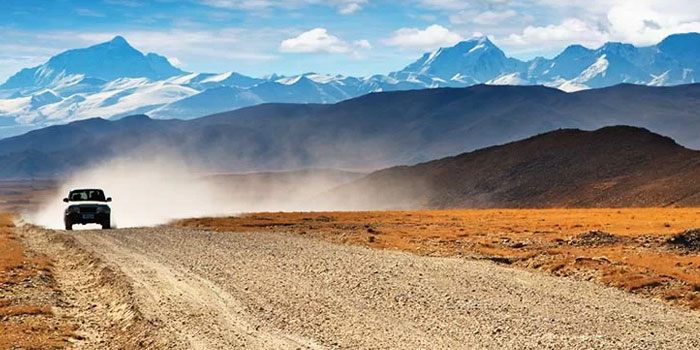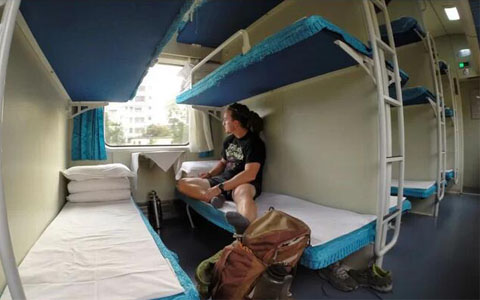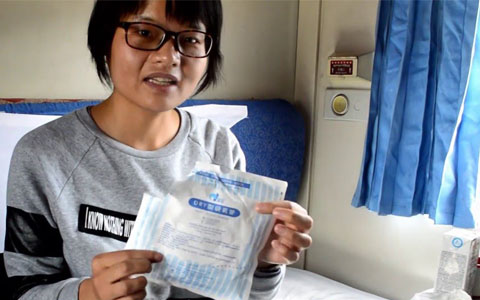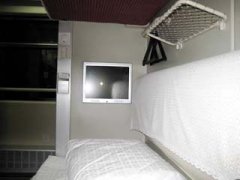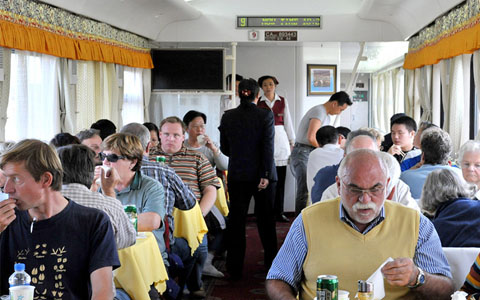Soft Sleeper on Tibet Train: Everything You Should Know Before Booking Your Train Ticket to Tibet
The soft sleeper on Tibet trains is the most luxurious option, offering spacious compartments, cozy bedding, and added privacy with amenities like TV screens and lockable doors.
Despite the higher cost, many tourists eagerly opt for a soft sleeper when traveling to Tibet. But what exactly does a soft sleeper entail? How much does the train ticket cost? And what can you expect onboard? In this guide, we'll provide all the details you need to know about the soft sleeper experience, helping you make the best decision for your Tibet train journey.
 1. How many soft sleeper Berths are there on a Tibet Train?
1. How many soft sleeper Berths are there on a Tibet Train?
 2. Which berth should I choose: Upper or Lower?
2. Which berth should I choose: Upper or Lower?
 3. How much does a soft sleeper train ticket cost for Tibet train travel?
3. How much does a soft sleeper train ticket cost for Tibet train travel?
 4. Can I book a whole soft sleeper cabin on a Tibet train?
4. Can I book a whole soft sleeper cabin on a Tibet train?
 5. Where should I store my luggage in a soft sleeper cabin on a Tibet train?
5. Where should I store my luggage in a soft sleeper cabin on a Tibet train?
 6. What facilities are available in a soft sleeper carriage on a Tibet train?
6. What facilities are available in a soft sleeper carriage on a Tibet train?
 7. Which type of ticket is best for me: Soft Sleeper or Hard Sleeper?
7. Which type of ticket is best for me: Soft Sleeper or Hard Sleeper?
 8. More Travel Tips for Taking a Soft Sleeper on a Tibet Train
8. More Travel Tips for Taking a Soft Sleeper on a Tibet Train
1. How many soft sleeper Berths are there on a Tibet Train?
In most cases, a Tibet train has two soft sleeper carriages and up to 64 soft sleeper berths. Each soft sleeper compartment has four berths, a small table, foldable ladders, a luggage closet, TV screens with headphones, and a sliding door facing the aisle. You can close the door to enjoy the quiet and privacy or sit on the foldable seats with tables at the aisle to make new friends with other travelers. With about 32 passengers in a carriage, life in a soft sleeper carriage is peaceful and leisurely.
 The spacious and cozy soft sleeper berth on Tibet train.
The spacious and cozy soft sleeper berth on Tibet train.
2. Which berth should I choose: Upper or Lower?
There are 2 upper berths and 2 lower berths in each soft sleeper compartment, and each soft sleeper berth is 75cm (29 inches) wide and 190cm (74 inches) long and can bear a weight of around 300kg (661.4 pounds).
Each berth has delicate and soft bedding sets, including a mattress, a sheet, a quilt, a pillow, and other bedroom decorative accessories. The lower soft sleeper berth also has a back cushion so that you don't need to lean against the cold, hard train wall. Between the two lower berths is a small table where you can place small items such as boxed food and bottled water. Beneath the table, you can find a thermos bottle for hot water and a small dustbin to throw in waste paper, etc.
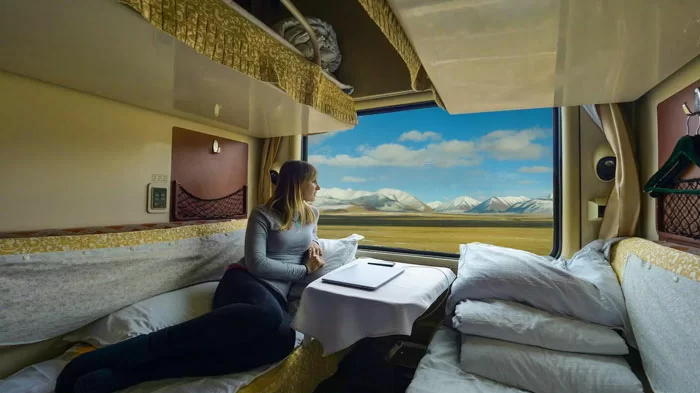 Lower of Tibet train soft sleeper.
Lower of Tibet train soft sleeper.
On the wall of each berth, there is a reading lamp, TV screen, clothes hanger, and foldable net shelf to put your general utility. You can also find a volume controller and an alarm button on the wall.
Both upper and lower berths are comfortable and convenient in a soft sleeper compartment. It is not hard to climb up to or sit straight on the upper berth because it has a headroom of 80cm, and you can get a more spacious room (headroom of 90cm) as well as privacy on the lower berth when the sliding door is locked. However, if you are traveling with kids or the elderly, the lower berth is more suitable for you.
3. How much does a soft sleeper train ticket cost for Tibet train travel?
The soft sleeper ticket is the top-class ticket on the train to Tibet. The cost of soft sleeper tickets depends on the length of the journey. Check the table below for a price list from different gateway cities to Tibet.
| Train Route | Distance | Ticket Price |
|---|---|---|
| Xining to Lhasa | 1,956 km | 781.0 |
| Lanzhou to Lhasa | 2,188 km | 823.0 |
| Chongqing to Lhasa | 3,030 km | 997.5 |
| Chengdu to Lhasa | 3,070 km | 997.5 |
| Beijing to Lhasa | 3,757 km | 1144.0 |
| Shanghai to Lhasa | 4,373 km | 1262.5 |
| Guangzhou to Lhasa | 4,980 km | 1468.0 |
Notice: The ticket prices above are the net prices. The demand for Tibet train tickets far exceeds the supply, so an additional service fee is involved to book the train ticket for you successfully.
4. Can I book a whole soft sleeper cabin on a Tibet train?
Yes, you can book the entire cabin, even if you don’t have a group of four people traveling together. Just purchase all the tickets for the cabin. However, securing the whole cabin might be challenging during peak season when tickets are in high demand. If you wish to do so, it's recommended to book well in advance.
 The corridor next to soft sleeper cabin
The corridor next to soft sleeper cabin
If you have booked four tickets that are not in the same cabin, it is possible to switch tickets with other passengers once on the train. People are generally very friendly, and switching berths onboard is not uncommon.
Your best bet for guaranteeing a whole soft sleeper cabin is to travel during the low season.
5. Where should I store my luggage in a soft sleeper cabin on a Tibet train?
You can put your luggage under the lower sleeper or in the overhead luggage storage inside each soft sleeper compartment. The space under the lower sleeper is about 30cm (12 inches) high and 75cm (29 inches) wide, while the luggage closet is 50cm (20 inches) in width and 40cm (16 inches) in height. For convenience, you can just place luggage underneath the lower soft sleeper berth.
You can put small items, such as a water flask, on the table or on the net shelf. However, it is advisable that you take valuable belongings with you whenever you go.
6. What facilities are available in a soft sleeper carriage on a Tibet train?
Soft sleeper facilities are designed with a comfortable journey in mind. On board, you can look forward to the following:
Sliding door: The sliding door to the soft sleeper compartment can be locked from the inside, it isolates noise from the aisle and provides a quiet travel environment for passengers.
TV Screens and headphones: You can change the channel and adjust the volume on your own.
 TV screen is available in soft sleeper compartment on Tibet train.
TV screen is available in soft sleeper compartment on Tibet train.
Air conditioner: All the trains to Tibet are air-conditioned to maintain a comfortable temperature so passengers can enjoy the breathtaking scenery along the Qinghai-Tibet Railway.
Oxygen supply: To alleviate altitude sickness when traveling on the Tibetan plateau, the oxygen supply on Tibet trains can increase the oxygen content of the carriage through the air-conditioning system and provide oxygen to individual passengers by connecting a plastic tube to the oxygen outlets around berths and on the wall of the aisle.
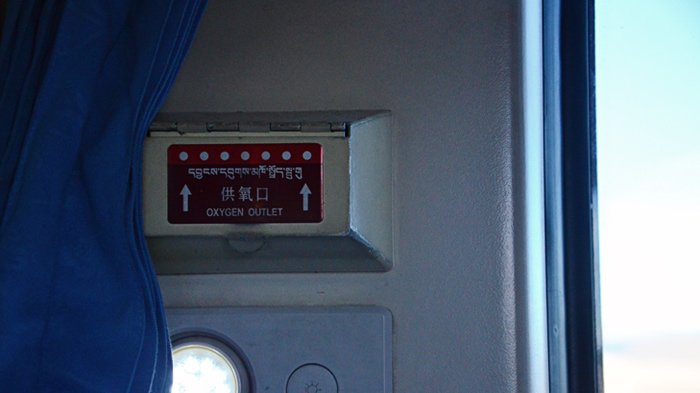 Oxygen supply on Tibet train
Oxygen supply on Tibet train
Attendant Room: The attendant room is located at the end of each carriage. You can talk to the train staff there if you need medical service or other assistance.
Hot water dispenser: The electric water boiler at the end of the carriage supplies free boiled water 24 hours a day. Bring your own water flask and get boiled water when the light on the dispenser turns green.
Lights: You can talk with fellow passengers in your cabin to decide when to turn off the main light in the compartment and use the private reading lamp when needed. The aisle lights, toilet lights, and lights in the car connections are kept on all night.
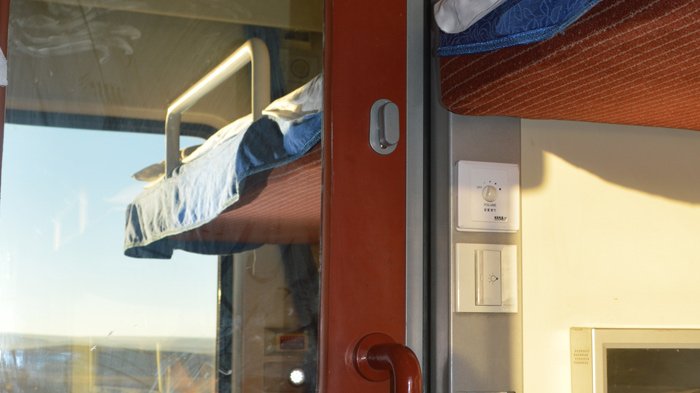 Light and broadcast controller on Tibet train
Light and broadcast controller on Tibet train
Sockets: In a soft sleeper carriage, you can find sockets on the berth wall, beneath the compartment table, on the wall in the aisles, and around washstands. WIFI and cellphone signals may be unstable on Tibet trains when traveling through mountainous areas.
Toilets: There is one squat toilet and one western toilet at the end of each carriage. Passengers can push the "Flush" button on the wall every time after using it, and a cleaner will come to clean it from time to time.
Washstands and large trash can: Both are adjacent to the toilets. You need to bring your own towel, wet paper tissue, and toilet articles. The train attendant will empty the trash can once it is full.
7. Which type of ticket is best for me: Soft Sleeper or Hard Sleeper?
There are three types of tickets on Tibet trains: hard seat, hard sleeper, and soft sleeper tickets. Since the Tibet train journey is really long, hard seats are not recommended because sitting still for long periods is not comfortable, and it isn't easy to sleep during the long ride to the Tibetan plateau. Additionally, due to the lack of privacy with hard seats, most travelers prefer sleeper tickets.
Video about soft sleeper compartment
A handy comparison between soft sleeper and hard sleeper
| Type | Berth | Lockable Door | TV Screen & Headphone | Individual Socket & Shelf |
|---|---|---|---|---|
| Soft Sleeper | 4 (75cm*190cm) | Yes | Yes | Yes |
| Hard Sleeper | 6 (60cm*180cm) | None | No | No |
Soft sleepers have many advantages over hard sleepers. Despite the higher price, soft sleepers definitely provide the best experience for tourists on the long ride atop the roof of the world. Soft compartments have spacious rooms with only four berths. In addition, compared with hard sleeper compartments, the lockable soft sleeper cabin door gives extra privacy and keeps out noise from other passengers at night.
The main drawback is that soft sleeper tickets are limited, particularly for popular routes like the Beijing to Lhasa train, making it challenging to secure one during peak season.
8. More Travel Tips for Taking a Soft Sleeper on a Tibet Train
The Tibet train is a unique and unforgettable travel experience through one of the world's most remote regions. Here are some tips to make your Tibet train tour more pleasant.
Tibet Travel Permit: A Tibet Travel Permit is required to collect the train ticket and board the Tibet train. Once you book the train ticket with us, we will provide the service to obtain the Tibet permit for you. We will deliver the permit to your hotel or any other place you prefer in China. For some emergency circumstances, we can hand it to you personally at the railway station before your train trip.
 Tibet Travel Permit is an indispensable travel document for Tibet entry.
Tibet Travel Permit is an indispensable travel document for Tibet entry.
Ticket availability: One thing to mention is that if one fails to book the soft sleeper, the hard sleeper is another alternative. Please book the Tibet train ticket with us at least three months in advance in peak season.
Berth token: Soon after boarding the train, you will be requested by the train attendant to exchange the hard sleeper ticket for a berth token. The attendant will walk to your berth and return your ticket when the train approaches your destination. So please keep the berth token and don't throw it away; you also need to keep your ticket because it will be checked when exiting the railway station.
Food and Drink: A dining car and food trolley that is pushed through the train is available for hot meals three times a day. You can also buy snacks and beverages at any time. Payment can be made in cash. You can also bring instant noodles, snacks, and beverages of your own.
Conclusion
The well-designed soft sleeper compartments on Tibet trains allow you to have a sound sleep and a comfortable environment without being disturbed by any curious or loud passengers. With a good rest on the train to Tibet, you are more likely to acclimatize easily to the high altitude and enjoy the Tibet trip as much as you can.
If you need help to arrange a train trip to Tibet, please feel free to share your travel plan with us if you are interested in visiting Tibet. With more than 10 years of Tibet travel experience, we can book the train ticket, apply for the Tibet Travel Permit, and arrange the most suitable itinerary to provide you with the most satisfying Tibet tour.

Jamyang Tsering, one of our senior travel guides, has a wealth of experience spanning nearly 20 years. Also a celebrated YouTuber for our Tibet Vista channel, Jamyang is genuinely enthusiastic about showing the REAL Tibet to both our customers and fans. It could be an interesting experience to explore Tibet with Jamyang.
Most Popular Tibet Tour Packages
-

Lhasa - Gyantse - Shigatse - Everest Base Camp - Shigatse - Lhasa
USD939
View Details -

Lhasa - Gyantse - Shigatse - E.B.C - Saga - Kailash Trek - Darchen - Lake Manasarovar - Saga - Gyirong - Tingri - Lhasa
USD2059
View Details -

10 Days Lhasa to Everest Base Camp and Namtso Lake Small Group Tour
Lhasa - Gyantse - Shigatse - EBC - Shigatse - Lhasa - Namtso Lake - Damxung - Lhasa
USD1289
View Details -

8 Days Driving Across Himalaya Overland Adventure from Kathmandu to Lhasa
Kathmandu - Gyirong - Everest Base Camp - Tingri - Shigatse - Gyantse - Lhasa
USD1069
View Details -

4 Days Lhasa Impression Small Group Tour: Explore the Heart of Tibet and Mingle with the Locals
Lhasa
USD509
View Details -

Lhasa - Gyantse - Shigatse - Everest Base Camp - Gyirong - Kathmandu
USD979
View Details -

Lhasa - Gyantse - Shigatse- Lhasa
USD799
View Details -

13 Day Lhasa, Mt. Everest, Mt. Kailash, Lake Manasarovar and Kathmandu Adventure Tour
Lhasa - Gyantse - Shigatse - EBC - Saga - Darchen - Kailash Trek - Darchen - Saga - Gyirong - Kathmandu
USD2059
View Details


.jpg)





